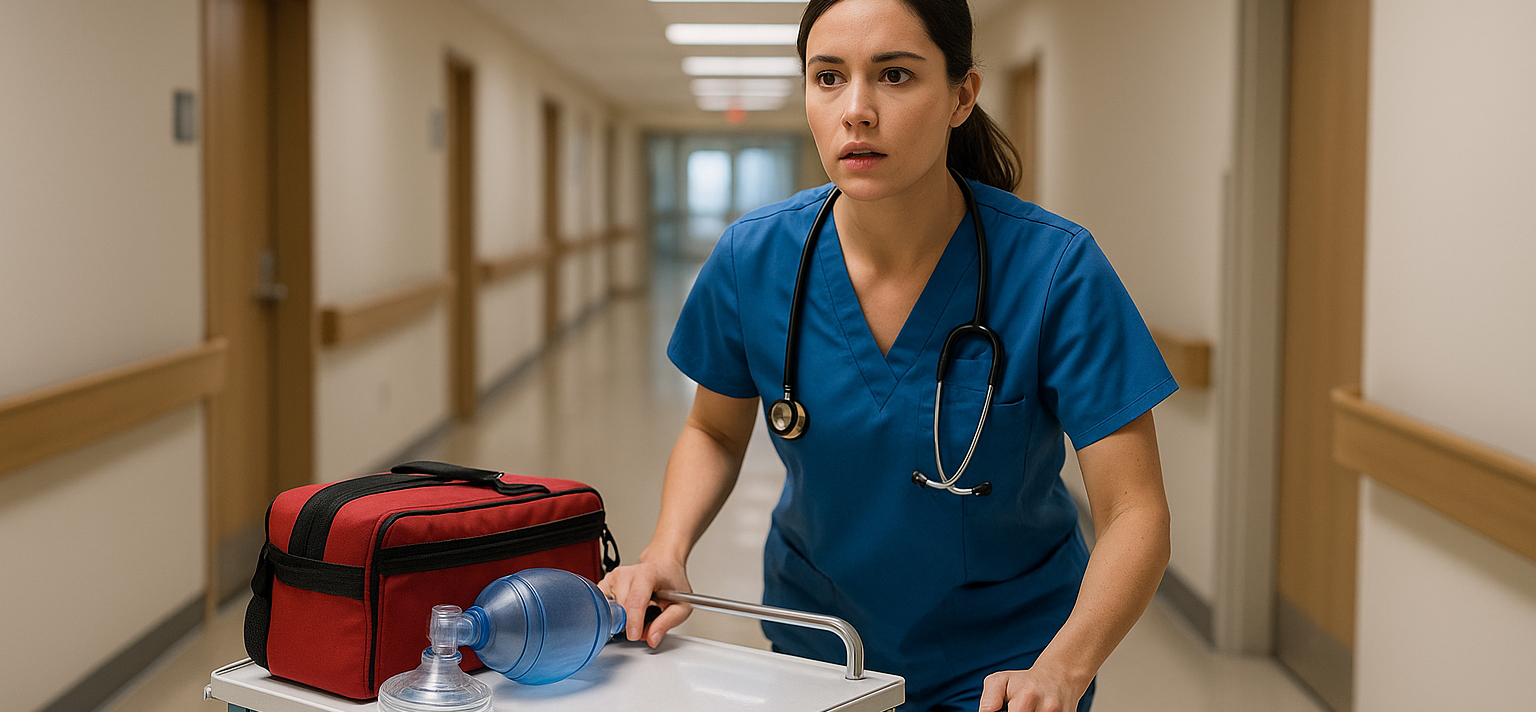This article is Part 2 of a three-part series on the importance of Patient Care Safety Monitors. Click here to read Part 1, or click here to read Part 3.
Patient Care Safety Monitors do far more than watch. Every word they speak and every note they write can calm fear, expose risk, and even prevent tragedy. When monitors pair trauma-informed communication with clear, factual documentation, they give care teams a real-time safety map—and a legal record that stands up to scrutiny. These communication and documentation practices are essential for healthcare conflict management, violence prevention programs for healthcare workers, and overall patient safety.
Start Every Shift Right
A simple greeting lowers danger before it starts. Walk in, make eye contact, and say:
“Hello, I’m [Name]. I’m here to help keep you safe. I’ll be with you throughout my shift.”
This “Universal Greeting” sets expectations, shows respect, and signals that the patient is not alone. Research on patient safety communications confirms that consistent opening statements reduce anxiety and build trust (Institute for Healthcare Improvement, 2021). This simple step reflects medical staff communication training best practices that improve patient cooperation and reduce conflict.
Observation Without Distraction
Maintaining uninterrupted focus is essential to the Patient Care Safety Monitor's effectiveness. The use of phones, books, or engaging in unrelated conversations can lead to missed signs of distress or self-harm. The Joint Commission emphasizes that even short lapses in observation can have tragic consequences, highlighting the importance of distraction-free monitoring (Joint Commission, NPSG.15.01.01).
Listening That Heals
Trauma-informed listening is an active skill set:
- Eyes up. Keep gentle eye contact to show you are present.
- Open posture. Uncrossed arms and a forward lean invite conversation.
- Soft tone. Lower volume calms the limbic “fight-or-flight” response.
- Paraphrase and confirm. “So the noise in the hallway kept you awake?”
- Minimal encouragers. Small nods or “I see” keep the patient talking.
Replace blame-laden questions (“Why are you doing this?”) with curiosity and care (“What’s been hardest for you today?”). This shift removes judgment and uncovers true needs, aligning with the SAMHSA National Guidelines for Behavioral Health Crisis Care. These communication techniques also align with clinical de-escalation techniques and trauma-informed care in healthcare settings, helping staff identify emotional distress before escalation occurs.
Chart What You See, Not What You Think
A monitor’s notes become the official history of the shift—and the first line of defense in court. Write facts, not opinions:
| Poor Entry | Professional Entry |
| “The patient is doing fine.” | “13:15 – Patient sitting on edge of bed, arms folded, silent.” |
| “Seems angry.” | “14:20 – Patient stated, ‘I feel trapped here,’ volume elevated, pacing 10-15 feet in room.” |
Quote exact words when a patient mentions death or self-harm:
“15:05 – Patient said, ‘No one cares if I live or die.’”
Under CMS Conditions of Participation §482.13, hospitals must protect patient rights; precise language proves the team recognized and addressed risk. Factual, clear, and time-stamped documentation strengthens healthcare workplace violence prevention programs by ensuring that staff accurately identify and report incidents in real time.
Mini Scenario: From Greeting to Escalation
- Greeting – 07:00. Patient Care Safety Monitor Maya greets Mr. Lopez with the Universal Greeting. He nods, relaxes his shoulders, and returns a faint smile
- Listening – 09:10. Mr. Lopez stares at the floor. Maya asks, “What’s been hardest for you this morning?” He whispers, “I don’t see the point of anything.”
- Documentation. She records: “09:10 – Patient stated, ‘I don’t see the point of anything,’ voice flat, eyes down.”
- Escalation. Maya activates the unit’s suicide-risk protocol. Nursing and behavioral health staff arrive within two minutes for assessment.
- Outcome. Because Maya documented verbatim statements and behaviors, the team adjusts observation to 1:1 Constant, adds a safety plan, and notifies psychiatry.
This scenario shows how clear, factual documentation paired with compassionate, behavioral health crisis intervention can transform observation into prevention.
Legal and Ethical Stakes
- HIPAA demands that records be accurate and limited to necessary information. Vague notes can be misread, but factual notes protect privacy and clarify intent.
- CMS CoPs and Joint Commission Sentinel Event Alert 61 emphasize that incomplete documentation is a common root cause in inpatient suicides.
- In court, a sloppy chart invites claims of negligence; a detailed, time-stamped record shows diligence and can save an institution from liability.
Remember the rule from the Vistelar Unified Conflict Management System Manual (2024):
“Write what you see, hear, and count—not what you interpret.” This aligns with conflict resolution training for nursing staff and supports compliance with healthcare workplace violence solutions that emphasize accuracy, empathy, and teamwork.
Key Takeaways
- First words matter. A respectful greeting creates safety and cooperation.
- Active listening uncovers risk. Body language and thoughtful questions reveal what charts miss.
- Facts first. Objective, time-stamped notes turn observation into evidence.
- Good charts save lives and lawsuits. Clear records meet HIPAA, CMS, and Joint Commission standards while guiding rapid, correct care.
When Patient Care Safety Monitors master these communication and documentation skills, they transform “just watching” into a life-saving practice—one accurate note and one caring word at a time. These competencies are fundamental for medical staff communication training, de-escalation techniques for healthcare professionals, and workplace violence prevention in hospitals.
This article is Part 2 of a three-part series on the importance of Patient Care Safety Monitors. Click here to read Part 1, or click here to read Part 3.








.png)
